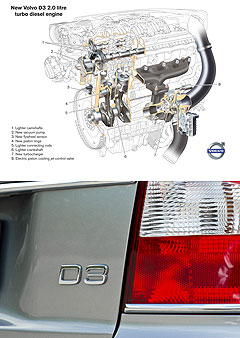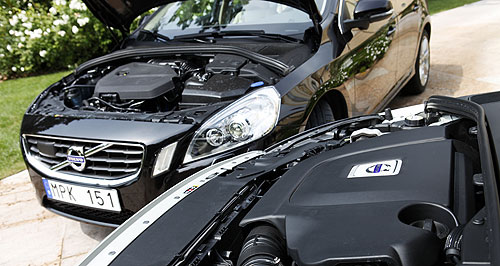News - VolvoVolvo’s automatic idle-stop manoeuvreStop, Volvo time: Volvo now offers idle-stop technology overseas on D3 diesel variants of models such as the V60, but neither the smaller diesel donk or the tech is confirmed for Australia. Volvo cracks its idle-stop code, fitting the fuel-saving tech to automatic models25 Aug 2011 VOLVO Cars is set to combine its fuel-saving idle-stop technology with the six-speed Geartronic automatic gearbox for the first time, on selected diesel models. The technology combination will be available overseas on several variants of its S60, S80, V60 and V70 passenger vehicles – although an Australian launch is uncertain. This is because the technology – which is standard on most large Volvos with manual transmissions overseas – will initially be available only on automatic variants of the 2.0-litre D3 turbo-diesel engine that is not available on the local market. Australian S60 and V60 models instead use the more powerful 2.4-litre D5 turbo-diesel powerplant, although Volvo says this engine is the same as the D3 in principle, except for its larger displacement and longer stroke. The S80 large sedan and the V70 luxury wagon, meanwhile, are not available with diesel as an option, instead using T6 petrol engines or an optional V8 petrol (on the S80).  Left: Diagram of the D3 diesel engine and D3 badge. Left: Diagram of the D3 diesel engine and D3 badge.Volvo Australia could not comment on when, or if, the idle-stop technology will be made available on other engines in the Swedish brand’s range – either petrol or diesel – or whether the smaller D3 could be join the S60 and V60 range here at some point. Australian managing director Matt Braid said reducing fuel consumption and emissions was important to Volvo, “so it is something that is under consideration for the future on our S60 and V60 models”. On manual vehicles, the engine stops when the car is idle, automatically restarting when the driver engages the clutch. In automatic guise, the technology is activated when the driver moves their foot from the brake pedal to the accelerator. Overseas models will not draw a price increase when fitted with the technology, which on the 2.0-litre D3 results in a claimed reduction in CO2 emissions of up to 10g/km and a drop in fuel consumption of as much as 0.4L/100km. Volvo Cars senior vice president for research and development Peter Mertens said idle-stop systems were a good stop-gap measure in the company’s DRIVe strategy towards a range with zero emissions. "It is the most effective way to cut CO2 throughout our model range in the short term,” he said. “This work is running parallel with our innovative focus on electrification technologies.''  Read more |
Click to shareVolvo articlesResearch Volvo Motor industry news |

















Facebook Twitter Instagram